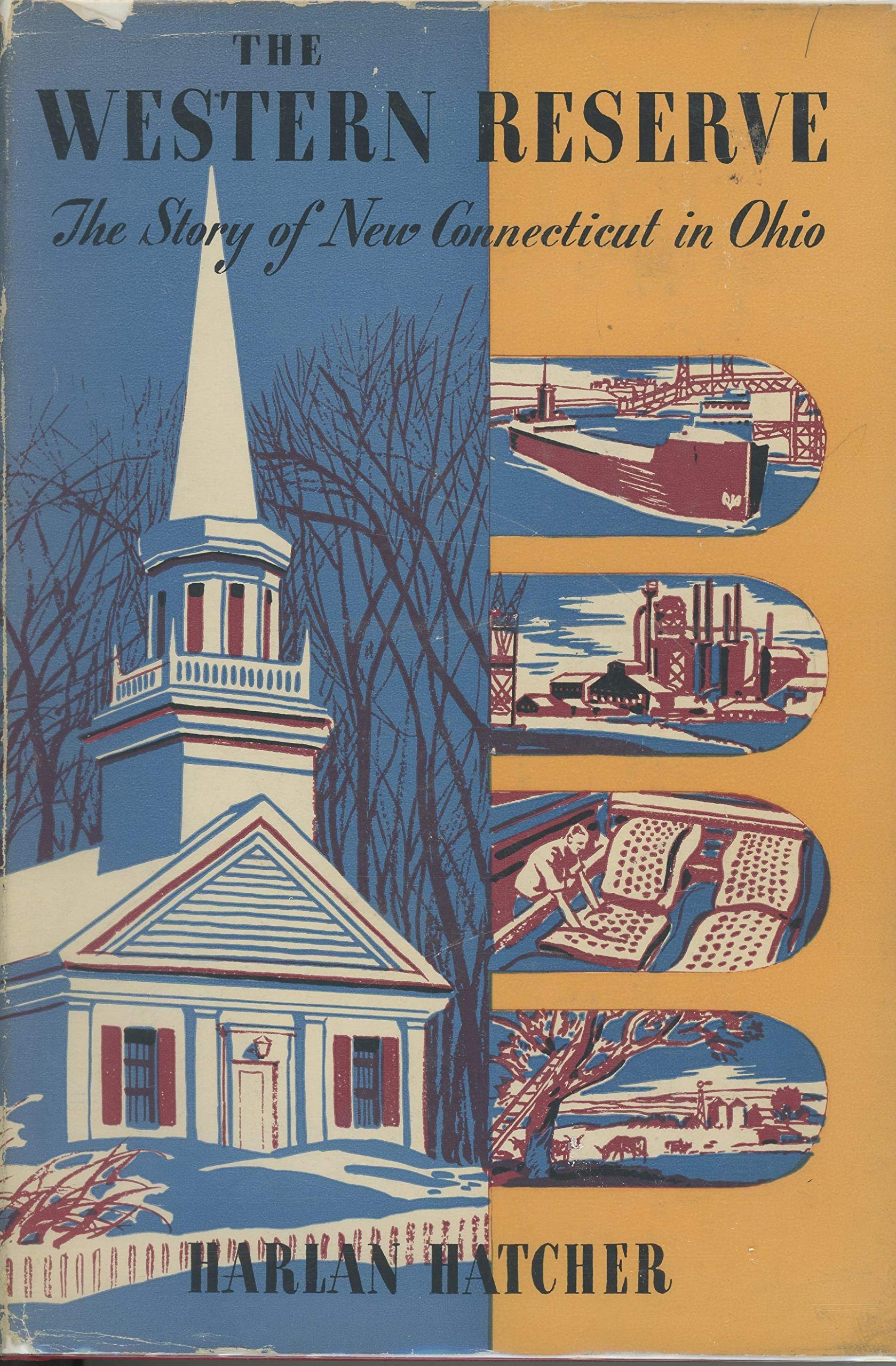A Land of Arresting Contrasts: On Harlan Hatcher's "The Western Reserve"
Harlan Hatcher | The Western Reserve: The Story of New Connecticut in Ohio | Kent State University Press, the Western Reserve Historical Society | 1991 | 327 Pages
In an era when Ohio and other Great Lakes states are maligned as homogenous and conservative spaces characterized by opioids and industrial detritus, works challenging these overly simplistic and predominantly coastal narratives assume greater importance. Many contemporary authors and academics are telling the region’s stories with nuance and sophistication, combating what Anne Trubek called “narrative inequality” in Voices from the Rust Belt. Revisiting works from previous generations is also important, particularly to explore the history, development, and former national prominence of the region. Harlan Hatcher’s The Western Reserve, originally published in 1949, is one such work, focusing on the Connecticut Western Reserve of Northeast Ohio from the late 1700s to the first part of the twentieth century.
Born in Ironton, Ohio, Hatcher authored several books on the region, including Lake Erie, The Great Lakes, and The Buckeye Country: A Pageant of Ohio. In The Western Reserve, Hatcher eloquently recounts the story of the Connecticut Western Reserve from its earliest surveyors to the mid-twentieth century. While the book reflects its era (and most scholarship until recently) with its neglect of the much longer Native American history of the region, in it Hatcher assembles rich accounts of the settlers and surveyors who endured hardships in the region throughout the early nineteenth century. These settlers, the majority of whom resettled from New England, gave the early development of Northeast Ohio a uniquely New England flair in culture, institutional development, and urban planning. Hatcher then moves into more familiar themes of canal development, Mormon settlement in Kirtland, the emergence of railroads and heavy industry, and the waves of immigration from the South, Appalachia, around the world that reshaped the history and culture of the region. Beautifully written at a time when decline probably seemed impossible, the feel of unstoppable progress in Hatcher’s prose is a treat for generations of Northeast Ohioans who never lived in Hatcher’s Western Reserve but instead experienced the depopulation and decline of the twentieth and twenty-first centuries.
The status of the Western Reserve as a place of what Hatcher calls “arresting contrasts” is central to the book. The region is not simply a “miniature New England” or a land shaped solely by trends of immigration, industrialization, and rapid urbanization in the late nineteenth and early twentieth centuries. The quintessential Rust Belt cities of the Reserve, “dark with the massive labors of Little Steel,” live in close proximity to places like Burton, Canfield, Hiram, Kinsman, Hudson, and Poland, which still have New England-inspired town greens, and stately homes and churches. A large Amish population lives in close proximity to Cleveland and Akron. Many Northeast Ohioans tap maple trees for syrup production. On the first page of the book, Hatcher notes that the cover of the 1944 Thanksgiving edition of Life, which celebrated the “devout spirit of New England puritans,” featured an image from a church in Tallmadge, Ohio. Tallmadge is just five miles from Akron, a former center of global rubber production.
The Western Reserve’s uniqueness extends beyond appearance. At least partially due to its New England institutional inheritance, the Western Reserve was a national leader on many fronts in the nineteenth century. The area’s fierce abolitionist and Underground Railroad activism are well known. (The famous abolitionist John Brown, for example, spent many formative years in Hudson.) Yet the region also made important national contributions to women’s suffrage (African American abolitionist and women’s rights activist Sojourner Truth delivered her historic “Ain’t I a Woman” speech in Akron in 1851), the integration of African Americans into universities (Oberlin in the 1830s), the formation of modern political campaigns (the nineteenth-century Republican politician Mark Hanna), and the development of integrated economic capitalism (Rockefeller). When considered together with the state’s successful run in presidential politics in the late nineteenth century, the Western Reserve and Ohio emerge as central to the American story.
Hatcher’s book offers a rich history that complicates today’s tropes about Ohio and the Midwest. Sadly, the region’s stories are not well known, a problem that will only worsen with the shuttering of important media such as the Youngstown Vindicator. Unfortunately, many of Hatcher’s books are out of print. Others such as Richard Campen’s comprehensive Architecture of the Western Reserve: 1800-1900 and Kent State University’s Western Reserve: A Regional Reader are not widely available. For all of its myriad challenges, the Western Reserve of Northeast Ohio deserves a more prominent position in American discourse as a place that shaped and continues to shape the Midwest and the nation more generally. Harlan Hatcher’s The Western Reserve is a fine and accessible place to start.
This review was written as part of our series on Midwestern history, a collection of reviews on texts of historical significance in the region. Writers interested in contributing to this series are encouraged to contact its editor, Jacob A. Bruggeman.

